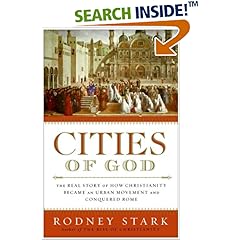The Thirteenth Apostle Q&A
1. Can you tell me a little about the background of the Gospel of Judas? When does it date from, where was it found?
The manuscript was discovered in the 1970s in an ancient catacomb that was being looted by local peasants living near the cliffs of the Jebel Qarara. The Jebel Qarara hills are only a few minutes on foot from the Nile River not far from El Minya, Egypt. Although we know that the Gospel of Judas existed in the middle of the second century because Bishop Irenaeus of Lyons mentions it (ca. 180), the manuscript that we have is a fourth- or fifth-century Coptic translation. It was only one text in a book of Gnostic Christian writings. It was buried along with three other books that had been copied in the fourth- or fifth centuries – a book of Paul’s letters in Coptic, the book of Exodus in Greek, and a mathematical treatise in Greek. All four books had been sealed in a white limestone box and buried in a family tomb. If nothing else, their burial in this tomb points to their favoritism in the life of an early Christian living in ancient Egypt, a Christian who seems to have had esoteric leanings, and no difficulty studying canonical favorites alongside the Gnostic Gospel of Judas. In fact, he appears to have wanted to take them with him in death.
2. Why did it take so long to make the first English translation?
The English translation wasn’t what took so long. What took the time was recovering the text from the antiquities market, which finally was done in the early 2000s.It also took time to restore the manuscript so that it could be read. The book that contains the Gospel of Judas was in the worst possible shape due to terrible handling once it left the grave. It had been torn in parts to make quicker and more profitable sales. The pages had been reshuffled so that the original pagination was gone. It was brittle and crumbling thanks to a stay in someone’s freezer. The ink was barely illegible because of exposure to the elements. Members of the National Geographic team have told me that initially they photocopied every fragment and then used the photocopies to piece together the pages. They worked with tweezers to fit together the shards of papyrus and also relied on state-of-the-art computer technology. Once the restoration was complete, the manuscript could be read. It is written in an old Egyptian language called Coptic. The Coptic text had to be transcribed, which was no small job given the fragmented nature of the restored pages and the eroded ink. After the initial transcription was made, it was then translated into English.
3. What was it about the National Geographic translation that inspired you to make your own translation?
When National Geographic finally released the transcription and translation of the Gospel of Judas, I was enthusiastic because my area of expertise is ancient Gnostic religiosity and early Christian mysticism. Most of my career as a professor has been devoted to the study of the Nag Hammadi texts. The Gospel of Judas came upon most of us out of a whirlwind. I had heard whispers about the Gospel of Judas for years, but nothing really concrete. Then there it was captured on film and on the web. I was repelled by the sensationalism of its release, but still attracted to the idea that here was a brand new Gnostic text that no one has read for how many centuries?! I guess I wanted to know what stories it had to tell us about the Christians who wrote it in the second century. And once I started to work out my own translation, I realized that I had an obligation to other scholars and to the public to set the record straight about what the Gospel of Judas actually says.
4. What makes your interpretation so different from the NG version?For a long time, scholars have thought that the Gospel of Judas featured a Judas hero because testimony from a couple of Church Fathers led us to believe that there were a group of Gnostics known as Cainites. The Cainites were said to believe that all the bad characters in the bible, including Judas, were actually heroes. I tend to be extremely skeptical of the testimony of the Church Fathers on these sorts of issues for the sheer fact that the Fathers saw the Gnostics as their opponents and they did everything they could to undermine them, including lying. So I didn’t have an opinion on what the Gospel of Judas should say about Judas. Once I started translating the Gospel of Judas and began to see the types of translation choices that the National Geographic team had made, I was startled and concerned. The text very clearly called Judas a “demon.” Why did the team feel it necessary to translate this “spirit”? The text very clearly says that Judas will be “separated from” the Gnostics. Why did the team feel it necessary to translate this “set apart for” the Gnostics? And so forth. I didn’t care if Judas was good, bad or ugly. I just wanted to hear what the Sethian Gnostics had to say about him, and make sense of the text as a whole.
5. Why do you think that the NG interpretation doesn’t work?Not only is this interpretation based on a problematic English translation, rather than on what the Coptic actually says, but the opinion that Judas is a hero and a good guy is nonsense in terms of the bigger gospel narrative. For instance, this gospel berates sacrifice and understands it to be a horrifying practice dedicated to the god who wars against the supreme Father God. If this is the case, then Judas’ sacrifice of Jesus simply cannot be a good thing. To say it is, is to rip apart the logic of what the text is saying as a whole.
6. Why do think so many scholars and writers have been inspired by the NG version?I have been truly amazed at the number of people who have jumped on this bandwagon. One of my colleagues upon hearing my concerns at a conference, stood up and said, “I just don’t see why Judas can’t be good. We need a good Judas.” This really stopped me in my tracks and took this discourse to an entirely new level for me. There is something bigger going on here, in our modern communal psyche. I haven’t been able to put my finger on it exactly, but it appears to have something to do with our collective guilt about anti-Semitism and our need to reform the relationship between Jews and Christians following World War II. Judas has been a terrifying figure in our history, since he became in the Middle Ages the archetypal Jew who was responsible for Jesus’ death. His story was abused for centuries as a justification to commit atrocities against Jews. I wonder if one of the ways that our communal psyche has handled this in recent decades is to try to erase or explain the evil Judas, to remove from him the guilt of Jesus’ death. There are many examples of this in pop fiction and film produced after World War II. It seems to be that the National Geographic interpretation has grown out of this collective need and has been well-received because of it.
7. Why has no one challenged the NG version before now?
There have been challenges, but they are just now beginning to be published due to the year lag it takes to move something into press. Because the National Geographic team had exclusive rights for publication, the contents of the Gospel of Judas have been kept in strictest confidence and secrecy. The members of the team were required to sign non-disclosure statements in order to keep this secrecy until the Gospel was published in April 2006. So the interpretation that this team spun, is the only one that was allowed to emerge, and it did so as “the” authoritative interpretation. Scholars all over the world literally have been left behind by years because of this exclusivity. This has robbed the academic community of the opportunity to freely discuss this Gospel, offering different viewpoints, questioning transcriptional and translation choices, and so forth, before the release of a reliable critical edition. What is worse is that National Geographic still has not released the photographs of the Gospel of Judas, so even the Coptic transcription they have provided us on the Web cannot be checked for accuracy. In June 2007, National Geographic is supposed to release the critical edition with photographs, a project that was accomplished with no input from scholars beyond National Geographic’s team. Certainly National Geographic has had its exclusive, an exclusive that may have been very profitable for National Geographic, but it is a profit at the expense of our field, not only in terms of what the Gospel of Judas actually says, but also in terms of our reputation as professors and scholars.
8. Who do you think wrote the Gospel? Why do you think they wrote it?
The Gospel of Judas was written by Gnostic Christians called Sethians in the mid-second century. They wrote it to criticize Apostolic or mainstream Christianity, which they understood to be a form of Christianity that needed to reassess its faith. Particularly troubling for these Gnostic Christians was the Apostolic belief in the atonement, because this meant that God would have had to commit infanticide by sacrificing the Son. They wrote the Gospel of Judas to prove that this could not be the case. Why? Because Judas was a demon who worked for another demon who rules this world and whose name is Ialdabaoth. How did they know this? Because Jesus had revealed this to Judas before Judas betrayed him. That is the bottom line. That is what this gospel says.
9. What do you think this manuscript tells us about early Christianity? Why is the Gospel of Judas important? This gospel’s voice is different. It represents the opinions of Christians in the second century who came to be labeled as “heretical” by later bishops who wished to gain control of the religious landscape. Because this is a Gnostic Christian tradition that did not survive, the chance find of this gospel has let us tune into a second century discussion about theology. And the voice we are hearing is the voice of the guy who lost the debate. Not only is the recovery and integration of this voice into our history important, but also its contribution to Christian theology, which is enormous. The challenge against atonement theology as it is presented in the Gospel of Judas is a challenge that rocked the Apostolic Churches, forcing them to refine and recreate their position. The end result is a doctrine of atonement that became very popular in the Christian Church, a doctrine that understood the sacrifice of Jesus as a ransom paid to the Devil. This doctrine exists as a response to the Gnostic criticisms of atonement that we find in the Gospel of Judas.
10. What do you think it is about the figure of Judas that seems to fascinate both scholars and the general reader?
Judas Iscariot is a frightening figure. For Christians, he is the one who had it all, and yet betrayed God to his death for a few dollars. He is the archetype of human evil, the worst human being ever to live. He is the antithesis of the true Christian. Because of this, his image works as a religious control – he is someone the Christian never wants to become. For Jews, he is terrifying, the man whom Christians associated with Jewish people, whose story was used against them for centuries as a religious justification for their abuse and slaughter. Even his name “Judas” has been linked to “Jew,” due to their root similarities (Judas/Judea/Jews). I think that Judas is someone whose shadow haunts us.
Thanks to Robert Trebb of Continuum for sending me the interview.
The Thirteenth Apostle is due for release in October.













